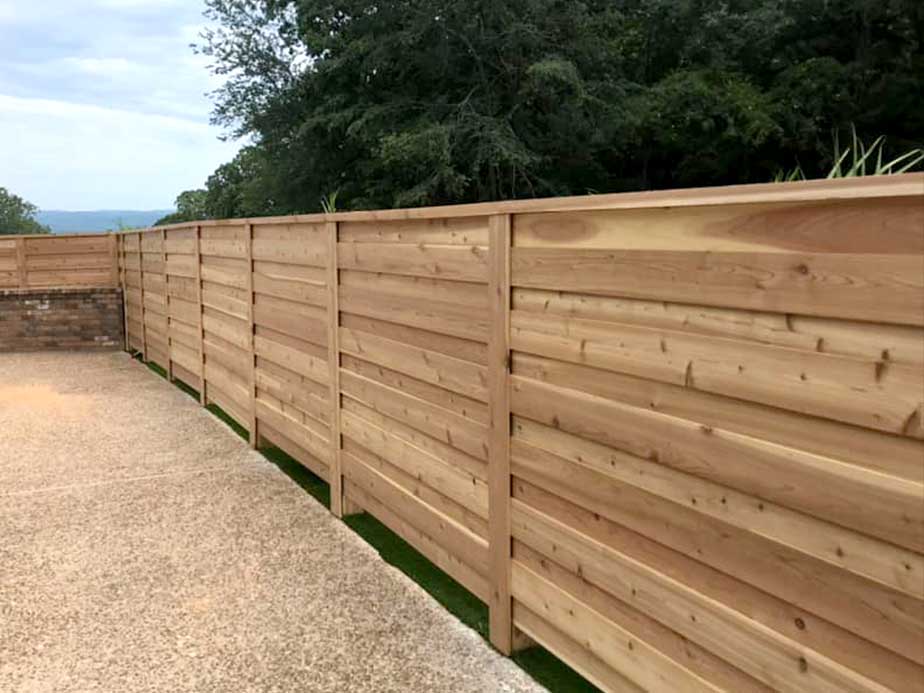All Categories
Featured

Mounting a fencing on uneven or sloped terrain provides a special challenge, however with the ideal expertise and preparation, it's entirely possible to attain a useful and cosmetically pleasing outcome. Whether you are trying to confine your lawn, include personal privacy, or just mark limits, comprehending exactly how to browse these kinds of landscapes is vital for an effective fence setup.
- Recognizing the Kind Of Slope. The very first step in figuring out how to install a fencing on sloped or uneven land is to assess the severity of the slope. There are two primary kinds of slopes you might experience:
Gradual Slopes: These are mild slopes where the surface does not change significantly in elevation. With this type of incline, a conventional fence installation may be sufficient, specifically if you select the stepped strategy. Steep Slopes: A more challenging terrain where the ground rises sharply over a short distance. This calls for more careful planning and specialized strategies such as racked secure fencing or customized steps to follow the terrain's natural slope. By determining the incline type, you can establish which fence installment method will function best.
- Tipped vs. Racked Secure Fencing. When managing a slope, there are 2 main methods to come close to the setup: the tipped technique and the racked approach.
Stepped Secure Fencing: The stepped method is excellent for moderate slopes. In this instance, the fencing adheres to the all-natural contour of the ground, but the panels are installed in "actions." This means the fencing sections are prepared in a horizontal pattern, with each section tipping down or up according to the incline. The advantage of this technique is that it can be easier to set up, however it may leave gaps at the base of the fencing.
Racked Secure fencing: This technique is perfect for steeper inclines, as the panels are gotten used to comply with the incline's angle. This implies that the entire fencing will follow the shape of the ground without leaving any type of gaps at the base. While this strategy calls for much more exact job, it develops a visually smooth and seamless fence.
- Considerations for Blog Post Installment. Installing articles on uneven surface requires careful measurement and focus to information. If making use of the tipped technique, posts need to be put at differing elevations to match the incline. This implies that each blog post requires to be effectively measured and set up to make sure the fencing remains straight and tough.
For racked secure fencing, articles are typically mounted at a consistent elevation, and the panels are changed to fit the angle of the incline. In any case, it's crucial that the blog posts are deeply embeded in the ground to prevent instability, especially when managing sloped or irregular dirt problems.
- Picking the Right Materials. When it comes to sloped land, not all fencing products are created equal. Some materials might need more modification to accommodate the incline, while others are more adaptable.

Timber Fencing: Timber is versatile and can be customized to function with both tipped and racked setups. It can be built with precision to adhere to the slope, but it might take longer to set up, particularly on high surface.
Plastic Fencing: Plastic is adaptable and can be adapted to sloped surface with convenience, especially with the racked method. It's long lasting and needs less maintenance than timber.
Chain Link Fencing: Wire mesh fence are commonly among the simplest to mount on sloped surface as a result of their fundamental flexibility. The materials can bend to follow the natural slope, making it perfect for unequal ground.

Each product has its own set of benefits, so think about the total appearance and capability you're going for when picking the very best choice for your property.
- Expert Installation. While some home owners might try to set up a fencing on sloped surface themselves, employing an expert fence installer is frequently a wise choice. Specialists have the experience and devices necessary to handle complex setups on uneven ground. They will certainly guarantee that the blog posts are appropriately positioned, the panels are safely affixed, and the end product is both steady and visually appealing.
Verdict. Setting up a fence on unequal or sloped terrain is most definitely possible, but it needs thoughtful consideration and mindful execution. By assessing the incline type, picking the ideal setup method, selecting proper products, and perhaps getting expert help, you can successfully develop a fencing that matches your property. Whether you select a stepped or racked layout, the outcome will certainly be a safe, useful, and attractive enhancement to your landscape.
Latest Posts
Trusted GMC Services Near Morris, IL
Published Dec 22, 24
1 min read
Why Dodge Should Be Your Next Ride
Published Dec 22, 24
1 min read
Why Mitsubishi Offers the Best Warranty in the Automotive Industry
Published Dec 22, 24
2 min read